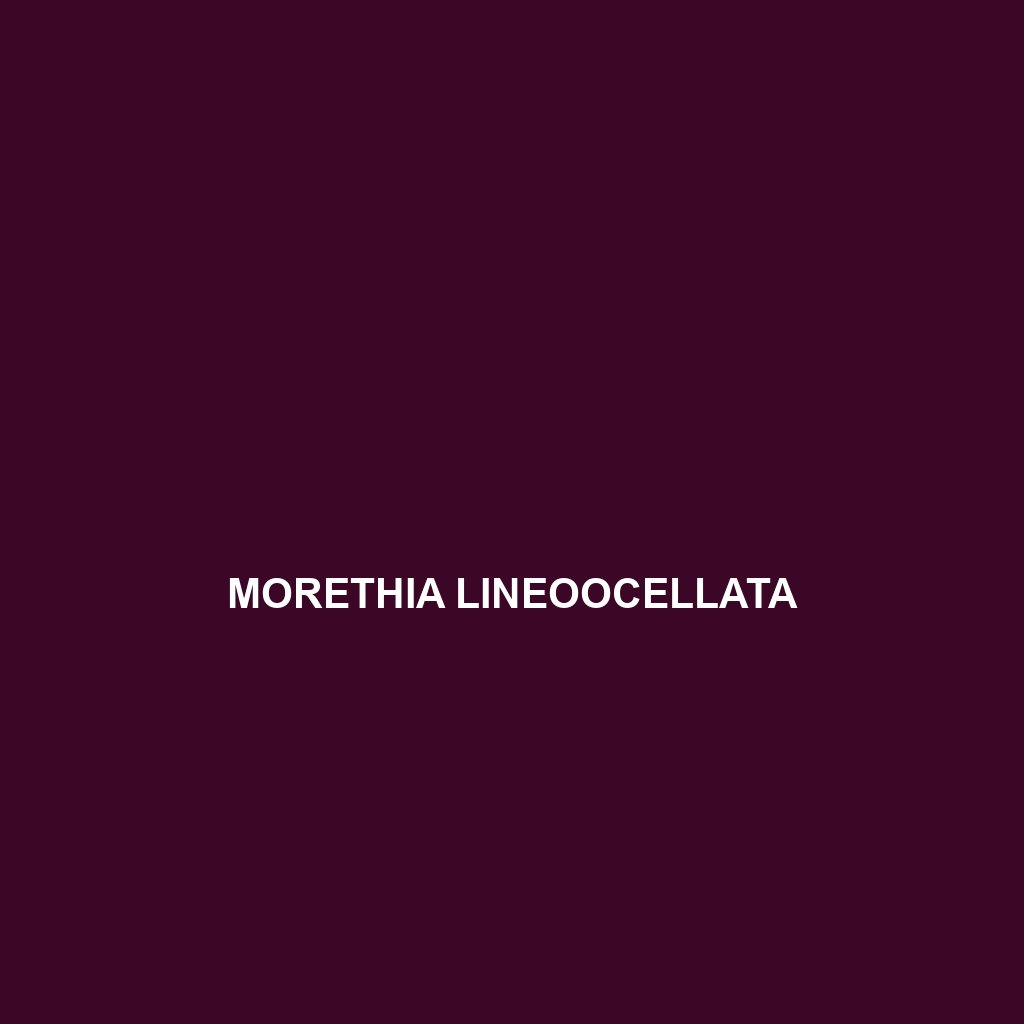Common Name
Morethia lineoocellata
Scientific Name
Morethia lineoocellata
Habitat
Morethia lineoocellata is primarily found in temperate forests and grasslands across eastern Australia. This species thrives in a range of environments, which include open scrublands, dry sclerophyll forests, and occasionally in areas with higher moisture levels. The typical climate found in these habitats ranges from warm temperate climates to subtropical zones, featuring distinct wet and dry seasons. Morethia lineoocellata is often associated with the leaf litter and underbrush where it can find both cover and a rich source of food, allowing for a variety of interactions with both flora and fauna in these ecosystems.
Physical Characteristics
Measuring approximately 6 to 10 centimeters in length, Morethia lineoocellata showcases a distinctive appearance that sets it apart from other lizard species. This skink has a slender, elongated body that is adorned with a series of fine longitudinal stripes running down its back, which can vary in coloration from a light brown to darker hues. The scales are smooth, providing an almost glossy finish, which may serve as a camouflage mechanism in its natural habitat. Unique features of this species include a somewhat flattened head and large, expressive eyes that allow for excellent vision, making it particularly adept at spotting predators and prey alike.
Behavior
Behaviorally, Morethia lineoocellata exhibits diurnal habits, actively foraging for food during the daytime. These skinks are known for their quick movements, which aid in evading predators. Typically solitary, Morethia lineoocellata does have a tolerance for cohabitation in densely populated areas, particularly during the mating season when males may establish territories and engage in behaviors to attract females. Their mating rituals often involve displays of strength and subtle movements to demonstrate fitness. Notably, they exhibit a unique behavior during hot days, often seeking shade and burrowing slightly into the cooler ground to regulate their body temperature.
Diet
Morethia lineoocellata is primarily an insectivore, feeding on a variety of small invertebrates. The diet primarily consists of ants, termites, and various beetles, which are plentiful in its habitat. In addition to insects, it may occasionally consume plant matter, showcasing some omnivorous feeding behavior. Feeding patterns revolve around foraging in leaf litter and amongst rocks and logs, capitalizing on the abundance of food sources in its environment. The skink’s keen eyesight aids in detecting prey, while its small, agile body allows for swift movements when capturing insects.
Reproduction
The reproductive cycle of Morethia lineoocellata typically occurs during the warmer months, from late spring to early summer. Mating rituals involve males engaging in courtship displays, which include visual signals and subtle movements to attract females. The gestation period can last from 6 to 9 weeks, after which females will lay clutches of 2 to 6 eggs in a hidden nest within the leaf litter. The hatchlings emerge fully formed, approximately 4 to 5 centimeters in length, and exhibit immediate independence. Parental care is minimal, as the young are equipped to fend for themselves soon after birth, relying on their instinctual hunting abilities to survive.
Conservation Status
As of the latest assessments, Morethia lineoocellata is classified as being of “Least Concern” by the International Union for Conservation of Nature (IUCN). This status indicates that, currently, there are no significant threats impacting their population levels, largely due to their adaptability to various habitats. However, ongoing habitat loss due to urban development and land clearing poses a potential risk in the long term. Conservation efforts focusing on habitat preservation and awareness can further ensure the stability of their populations.
Interesting Facts
One remarkable aspect of Morethia lineoocellata is its remarkable ability to regenerate its tail after losing it due to predation, a phenomenon observed in many lizard species. Additionally, this skink has been noted for its exceptional speed and agility, often darting between forest underbrush to evade potential threats. Another interesting trait includes its social flexibility, as it often adjusts its behavior based on environmental conditions, adapting to seasonal changes and food availability.
Role in Ecosystem
Morethia lineoocellata plays a crucial role in its ecosystem as both a predator and prey. By controlling insect populations, it contributes to the ecological balance within its habitat. Additionally, as a food source for larger predators such as birds of prey and snakes, Morethia lineoocellata serves as an important link in the food web. The presence of this skink can indicate the overall health of its environment, making it a valuable species for ecological studies. Furthermore, its foraging activities help in soil aeration and nutrient distribution, contributing to a healthier and more productive ecosystem.
